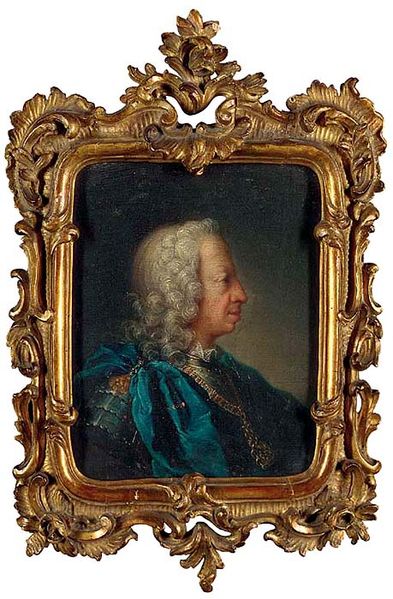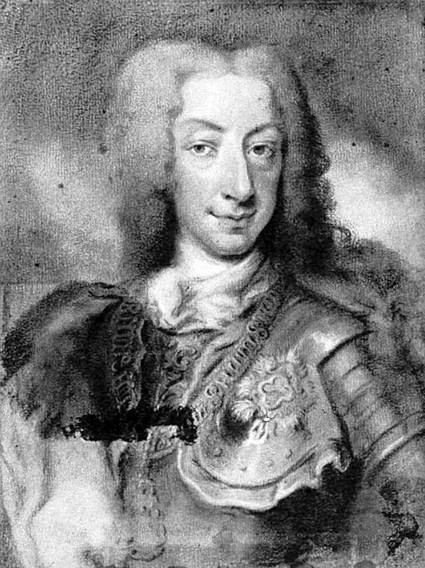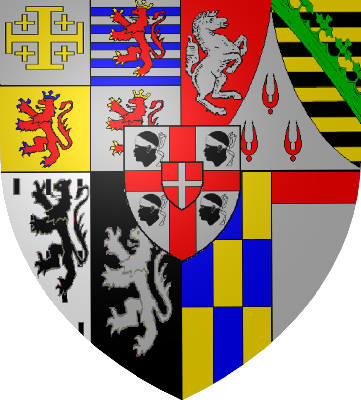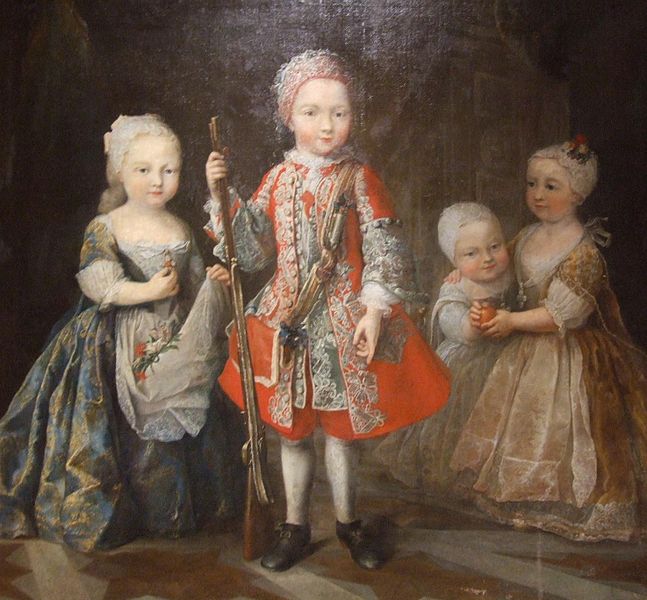<Back to Index>
- Mathematician Marc Antoine Parseval des Chênes, 1755
- Writer and Women's Rights Activist Mary Wollstonecraft, 1759
- King of Sardinia Charles Emmanuel III, 1701
PAGE SPONSOR



Charles Emmanuel III (27 April 1701 – 20 February 1773) was the Duke of Savoy and King of Sardinia from 1730 until his death.
He was born a Prince of Savoy in Turin to Victor Amadeus II of Savoy and his first wife the French Anne Marie d'Orléans. His maternal grandparents were Prince Philippe of France and his first wife Princess Henrietta Anne, the youngest daughter of King Charles I of England and Henrietta Maria of France. Charles Emmanuel was the oldest surviving brother of Princess Maria Adelaide of Savoy - the mother of Louis XV of France; he was also the brother of Maria Luisa of Savoy, Queen of Spain as wife of his maternal second cousin Philip V of Spain. From his birth he was styled as the Duke of Aosta.
At the time of his birth, Charles Emmanuel was not the heir to the Duchy of Savoy; his older brother Prince Victor Amadeus John Philip, Prince of Piedmont, was the heir apparent. Charles Emmanuel was the second of three males that would be born to his parents. His older brother died in 1715 and Charles Emmanuel then became heir apparent.
As a result of his aid in the War of the Spanish Succession, Victor Amadeus II was made King of Sicily in 1713 under the Treaty of Utrecht which ended the war. Victor Amadeus was forced to exchange Sicily for the less important kingdom of Sardinia in 1720 after objections from analliance of four nations, including several of his former allies. Yet he retained his new title of King. The rule was that there were no kings within the Empire, but if a ruler subject to the Emperor also possessed a large territory outside the Empire he might claim this title as the Elector of Brandenburg had done, styling himself King in Prussia based on his sovereignty over the Duchy of Prussia.
However, Victor Amadeus in his late year was dominated by shyness and sadness, probably under the effect of some mental illness. In the end, on 3 September 1730, he abdicated, leaving the throne to Charles (nicknamed "Carlino" for his gracile and unpleasant building). He was not loved by Victor Amadeus, and consequently received an incomplete education. He however acquired noteworthy knowledge in the military field along his father.
After some time spent at his residence in Chambéry,
however, Victor Amadeus started again to intervene in Charles'
government, although this did not impede Charles from reintroducing the
feasts and the general gay atmosphere that had been abolished from
Turin in former years. In summer, 1731, after having recovered from a
potentially fatal illness, Victor Amadeus returned to the throne. He
accused his son of incompetence and established himself in Moncalieri;
however, Charles Emmanuel managed to have Victor Amadeus arrested by
the Crown's Council, in order to prevent him from attacking Milan and probably causing an invasion of Piedmont. The old king was confined to the Castle of Rivoli, where he later died without any further harm to Charles.
In the War of the Polish Succession Charles Emmanuel sided with the French - backed king Stanislaw I. After the treaty of alliance signed in Turin, on 28 October 1733 he marched on Milan and occupied Lombardy without significant losses. However, when France tried to convince Philip V of Spain to join the coalition, he asked to receive Milan and Mantua in exchange. This was not acceptable for Charles Emmanuel, as it would recreate a Spanish domination in Italy as it had been in the previous centuries. While negotiations continued about the matter, the Savoy - French - Spanish troops attacked Mantua under the supreme command of Charles Emmanuel himself.
Sure
that in the end Mantua would be assigned to Spain, he voluntarily
thwarted the expedition. The Franco - Piedmontese army was victorious in
two battles at Crocetta and Guastalla. In the end, when Austria and France signed a peace, Charles was forced to leave Lombardy. In exchange, he was given some territories, including Langhe, Tortona and Novara.
Charles Emmanuel was involved in the War of the Austrian Succession, in which he sided with Maria Theresa of Austria, with financial and naval support from England. After noteworthy but inconclusive initial successes, he had to face the French - Spanish invasion of Savoy and, after a failed allied attempt to conquer the Kingdom of Naples, the county of Nizza. When the enemy army invaded Piedmont, in 1744 he personally defended Cuneo against the Spanish - French besiegers. The following year, with some 20,000 men, he was facing an invasion of two armies with a total of some 60,000 troops. The important strongholds of Alessandria, Asti and Casale fell. In 1746, after receiving reinforcements from Austria, he was able to recapture Alessandria and Asti. In 1747 he obtained a crushing victory over the French at the battle of Assietta, and his territories were saved when the main battleground moved northwards to the Netherlands.
The outcome of the Treaty of Aix - la - Chapelle showed his qualities as negotiator also, as he was returned the lost provinces of Nice and Savoy, and obtained Vigevano as well as other lands in the Pianura Padana. Ties with Spain were reestablished with the marriage of his son Victor Amadeus, Duke of Savoy to the Infanta Maria Antonietta of Spain in 1750.
He declined to participate in the Seven Years' War (1756 – 63), preferring to concentrate on administrative reforms, to maintain a well disciplined army and to strengthen his fortresses. In an attempt to improve the poor condition of the newly acquired Sardinia, he also restored the Universities of Sassari and Cagliari.
Charles Emmanuel died in Turin in 1773. He was buried in the Basilica of Superga.
